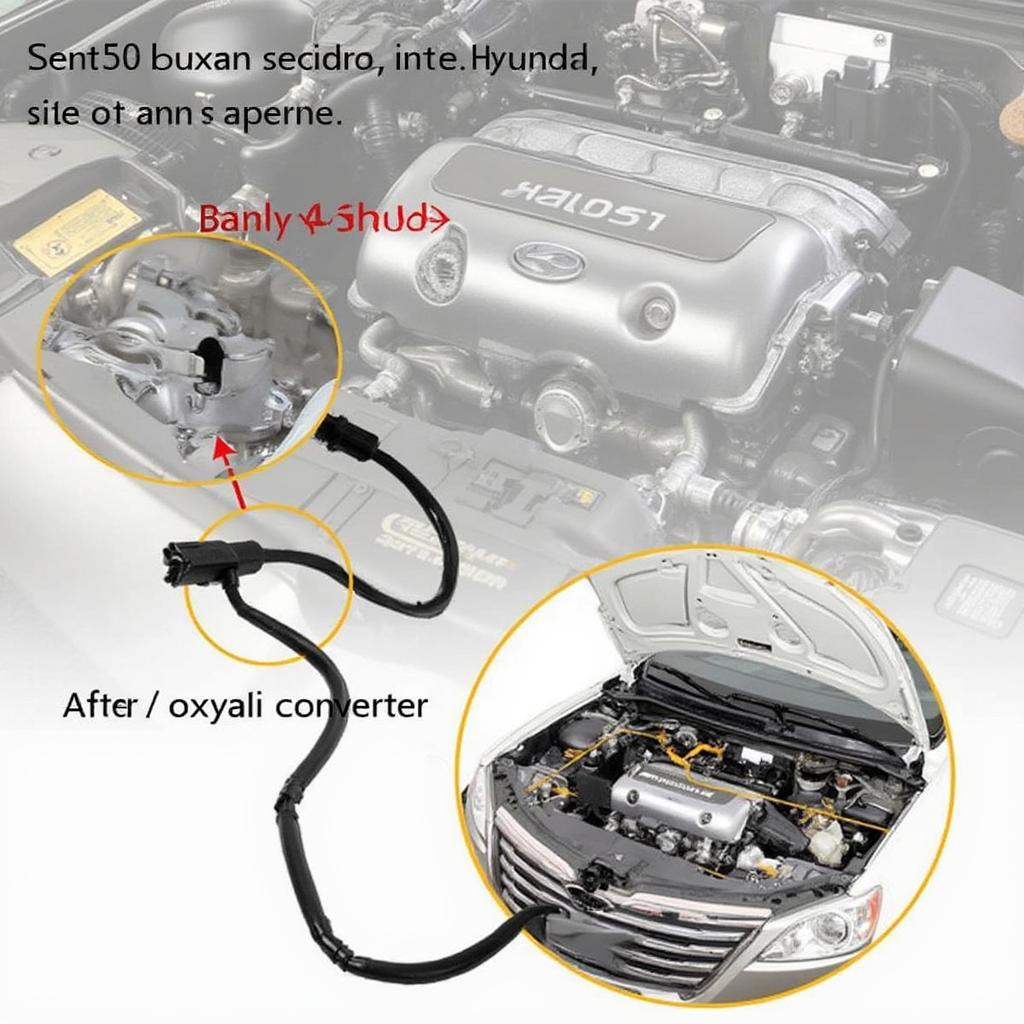The dreaded check engine light has illuminated your Hyundai’s dashboard, and your OBD2 scanner reveals the cryptic code P0037. This article dives deep into understanding Hyundai OBD2 code P0037, its causes, symptoms, diagnostic procedures, and solutions, empowering you to tackle this issue head-on.
Decoding the Mystery: What is Hyundai OBD2 Code P0037?
P0037 specifically points to a problem within the heated oxygen sensor (HO2S) control circuit, specifically for bank 1, sensor 2. This sensor plays a vital role in monitoring the exhaust gases after the catalytic converter, helping your Hyundai’s engine control unit (ECU) optimize fuel efficiency and emissions. A fault in this circuit can lead to decreased performance, increased emissions, and even potential damage to the catalytic converter.
Common Causes of P0037 in Hyundai Vehicles
Several factors can trigger the P0037 code in your Hyundai. These include a faulty HO2S sensor, damaged wiring or connectors, blown fuses, a malfunctioning ECU, or even exhaust leaks. Pinpointing the exact culprit requires a systematic diagnostic approach.
- Faulty HO2S Sensor: The sensor itself might have degraded due to age, exposure to high temperatures, or contamination.
- Wiring Issues: Damaged, corroded, or loose wiring in the sensor circuit can disrupt the signal transmission.
- Exhaust Leaks: Leaks before the sensor can introduce fresh air into the exhaust stream, affecting the sensor readings.
- Blown Fuse: A blown fuse in the HO2S circuit can cut off power to the sensor.
- ECU Malfunction: While less common, a faulty ECU can misinterpret sensor data or fail to control the heater circuit properly.
Recognizing the Symptoms: How Does P0037 Manifest?
While the illuminated check engine light is the most obvious sign, other symptoms can accompany the P0037 code. These can include decreased fuel economy, rough idling, hesitation during acceleration, and a noticeable sulfur smell from the exhaust.
Diagnosing P0037: A Step-by-Step Guide
- Retrieve the Code: Use an OBD2 scanner to confirm the P0037 code.
- Visual Inspection: Inspect the wiring and connectors for damage, corrosion, or loose connections.
- Voltage Test: Check the voltage at the sensor connector to ensure proper power supply.
- Resistance Test: Test the sensor’s resistance to determine if it’s within the specified range.
- Exhaust Leak Check: Inspect the exhaust system for leaks, especially before the sensor.
- ECU Check: If all other components check out, the ECU might require further diagnosis.
Fixing the P0037 Code: Solutions and Repairs
The specific repair depends on the diagnosed cause. Common solutions include replacing the faulty HO2S sensor, repairing damaged wiring or connectors, replacing blown fuses, addressing exhaust leaks, or in rare cases, replacing or reprogramming the ECU.
Conclusion: Taking Control of P0037
Understanding Hyundai OBD2 code P0037 empowers you to address this issue effectively. By following the diagnostic steps and implementing the appropriate repair, you can restore your Hyundai’s performance, fuel efficiency, and ensure compliance with emission standards. Don’t let the P0037 code keep you in the dark; take control and get your Hyundai back on the road.
FAQs about Hyundai OBD2 Code P0037
-
Can I drive with the P0037 code? While you might be able to drive, it’s best to address the issue promptly to avoid potential damage to the catalytic converter.
-
How much does it cost to fix P0037? The cost varies depending on the specific repair needed, ranging from a simple fuse replacement to a more expensive sensor or ECU repair.
-
Can I fix P0037 myself? Basic repairs like replacing a sensor or fuse can be done DIY, but more complex issues might require professional assistance.
-
How often should I replace my oxygen sensors? Typically, oxygen sensors have a lifespan of 60,000 to 90,000 miles.
-
Will clearing the code fix the problem? Clearing the code might temporarily turn off the check engine light, but the underlying issue will persist.
Need help? Contact us via WhatsApp: +1(641)206-8880, Email: [email protected] or visit us at 789 Elm Street, San Francisco, CA 94102, USA. We have a 24/7 customer support team.
